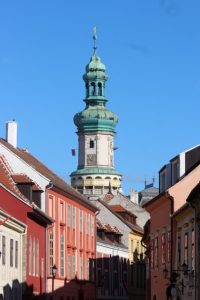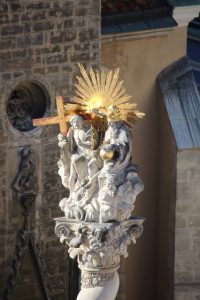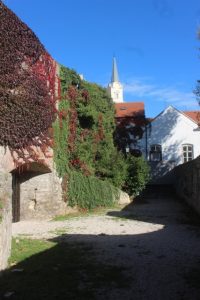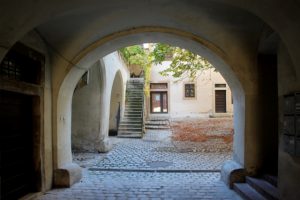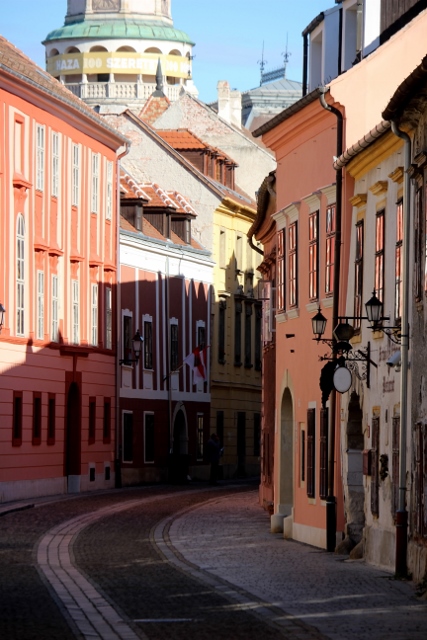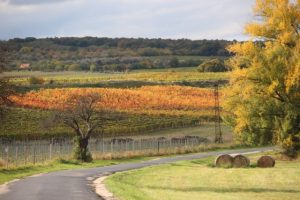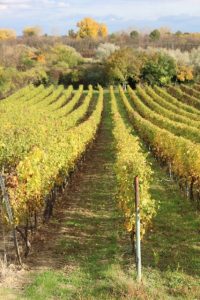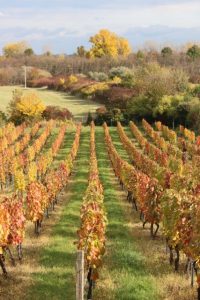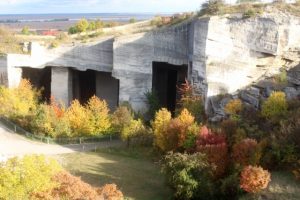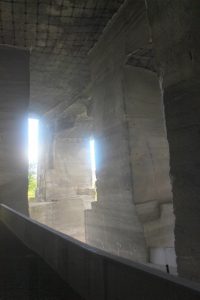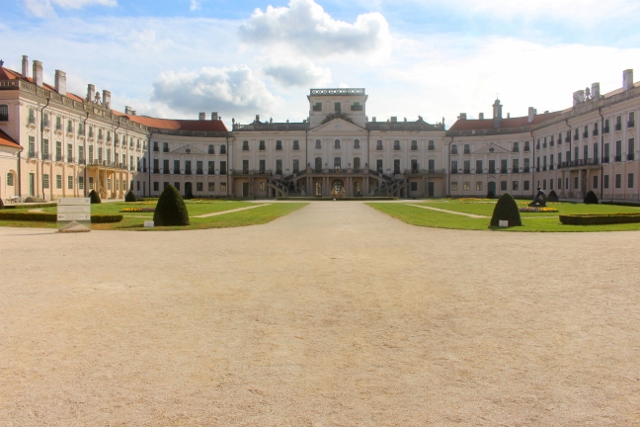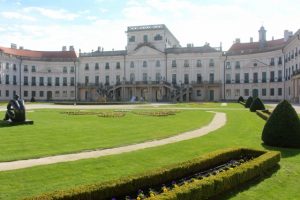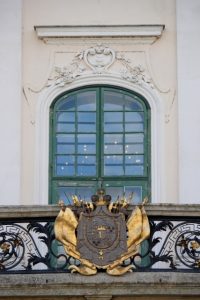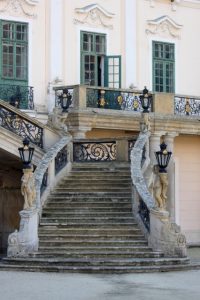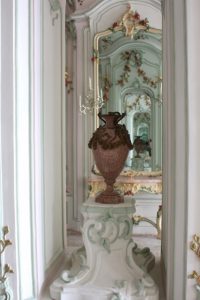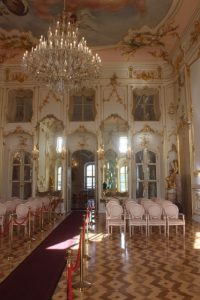Right next to the Austrian border is Sopron, another nice town, with vine yards, a limestone quarry and a real palace in its neighbourhood.
Unlike so many other towns we have seen in the last few weeks, Sopron, like Koszeg, has never been affected by the Ottoman occupation, which is visible in its architecture: the centre of Sopron, with its cobbled streets and relatively small houses, is much more a medieval town. It lacks the relative grandeur of late 19th/early 20th Century multi-storey architecture, instead it has more humble, pastel-coloured low-rise buildings, and narrower streets.
The defining building is the Fire Tower. It dates from 1676, built after a town fire, and was subsequently manned by guards, who were supposed to warn for a fire, anywhere in town, from the balcony high up the tower. Which you can climb, today, of course, mostly along fairly comfortable stairs, for a view over town – not that impressive, after all, because the tower is actually not very high, nothing compared to the cathedral in Budapest, or even the church in Bardejov.
And for the rest it is just fun to wander through the old town, of which in places the old walls are still in existence, nicely restored. There are several churches, and synagogues. Many of the houses have large, attractive courtyards. And others have stairs to the basement, to – guess what? – wine bars, serving some of the quite acceptable local wines, accompanied by extensive plates with cheese and cold cuts. Of which we sampled some, of course.
Outside Sopron, towards the Lake Ferto, are the grapes, extensive fields with neat row upon row of vines. Harvested by now, but spectacularly coloured in autumn. We drive through, on our way to the village of Fertoragos, home of an impressive limestone quarry which has been exploited since the 14th Century. Apparently, even Vienna cathedrals have been built from the blocks extracted here, and what is left is a man-made cave system, turned into a museum and a theatre. No concerts, during our visit, but there is an extensive exhibition on the Miocene origins of the limestone and its perceived fauna at the time, quite nicely done.
The real gem, however, is the Esterhazy Palace, in the nearby town of Fertod (I know, it sounds very similar, these placenames). Perhaps best known for the fact that this is where Joseph Haydn spent 30 years of his life as resident composer. The palace was built by Count Nicholas Esterhazy in the late 18th Century, to rival Versailles. Nicholas, nicknamed ‘the Ostentatious’ – and you can see why -, built it as a summer palace, it was not even his primary residence. And when he died, in 1790, none of his successors were ever remotely interested in living here. Which is, I suppose, from when the neglect started; nowadays the palace is slowly being restored – apparently, one of Nicholas’ descendants has returned to live here -, but you can see that there is still a long way to go.
The only way to get inside the palace, inside some of the 126 rooms, is to sign up for a tour. In Hungarian, of course. But we are the only ones, so our guide explains in passable English, instead. VIP treatment, once again. In fact, there is very little open to the public: the tiny chapel, a garden room downstairs and the extravagant concert and banqueting halls on the first floor. But it is a nice enough experience, glancing a glimpse of what Nicholas the Ostentatious was up to. Those times. Long gone, except for the symphonies of Haydn.
Tome to look back at our trip.
